The BitFenix Pandora ATX Case Review
by E. Fylladitakis on August 11, 2016 9:00 AM EST- Posted in
- Cases/Cooling/PSUs
- bitfenix
- ATX
- Case
The Interior of the BitFenix Pandora ATX
The removal of the case’s panels reveals a relatively roomy but complex interior. BitFenix has sprayed the interior of the Pandora ATX with a matte black paint. The paint job is excellent but this particular paint is highly prone to fingermarks. Aside from the chassis and other metal parts of the case, everything inside the Pandora ATX is black, including the fans, the cables and every single screw and stand-off.
There is an opening on the motherboard tray for the installation of aftermarket CPU coolers, large enough to offer compatibility with most motherboards, yet not overly so as to expand beyond the limits of a Flex-ATX motherboard. Openings for the routing of cables can be seen to the right and below the motherboard area. Simple but effective rubber grommets cover these openings. There is another very large opening at the top right side of the system area, without a cover.
The installation of drives inside the Pandora ATX is being done on metallic trays found throughout the case. We found three 3.5” drive trays inside the bottom compartment near the front of the case, with two of them being at the bottom of the case and one at the top of the compartment. Another 3.5” drive tray is within the system area, right beneath the motherboard. The four 2.5” trays can be found to the front of the motherboard tray, two on either side of the case. It is interesting to note that the 2.5” trays inside the system area can be exchanged with 3.5” trays if the user wants to. 2.5” devices can also be installed on the 3.5” trays if needed.
The installation of the drives on the 3.5” trays is done by inserting rubber grommets on them and then securing the drive using the provided screws. As 2.5” drives do not really vibrate, BitFenix kept the 2.5” trays very simple and the drive is directly secured on the tray with typical screws.
Note that the 2.5” trays just look like they can take the device inside them - the 2.5” drive will not fit inside the tray, it is meant to be installed on it. BitFenix wants the drive to be visible when viewed from a windowed side panel.
The strange metallic mount at the bottom of the system area is a liquid cooling pump mount. BitFenix claims that it can hold every pump meant for a PC cooling setup available today. Even if a pump is not directly compatible, drilling an extra hole or two should be a cakewalk for a modder. A soft anti-vibration pad is installed on the mount to help reduce the possibility of vibration-induced noise from the pump. The concept is very interesting but the position of the mount can be problematic with a multi-GPU system, as it can block the installation of a card depending on its length and installation slot.
The top panel of the case can easily come off by simply pressing down on it. Here the user can install up to three 120 mm or two 140 mm fans and relatedly sized radiators. There is enough space between the top cover and the installation mounts for the vast majority of liquid cooling radiators available today, but we would not recommend some of the proprietary models that may be over 40 mm thick. A metallic brace can also be noticed and it is meant to serve as a mounting point for liquid cooling reservoirs, allowing the user to essentially hang them right in front of the motherboard.
Up to three 120 mm or two 140 mm fans and relatedly sized radiators can also fit at the front of the BitFenix Pandora ATX. Access is gained by carefully pulling the faceplate off, as the cable attached to the front LCD can be easily damaged. One 140 mm fan with a fluid dynamic bearing engine has been installed at front of the case from the factory.
The PSU compartment is roomy, allowing PSUs up to 240 mm in length to be installed. There is a hole right above the PSU leading directly to the system area, but the intended path for the cables is alongside the edge of the motherboard, where BitFenix installed three long cable straps. Cable tie mounting points can be seen all across the rear of the motherboard tray.
For the means of this review, we installed a Corsair AX760i with the red cable set, for strong visual contrast. The AX760i easily fits inside the BitFenix Pandora ATX, with more than enough room for managing the cables. Most of the cables will probably be amassed across the side of the motherboard’s tray, secured by the straps. They may create a rather thick bundle but the Pandora ATX has a clearance of 23.5 mm between the chassis and the side panel, which should prove to be more than enough. We do feel that the cable management straps should be a little to the side as they force the cables to go over the openings and they are amassed too close to the 2.5” drive trays, but this is not a major issue, only a practical nuisance.
The ATX system fits inside the system area of the Pandora ATX like a glove, allowing the installation of large air coolers, liquid coolers and long/wide graphics cards. The space in front of the motherboard, allowing cards up to 440 mm long to the installed, but it can be seen that the presence of a pump on the intended mount would most likely block the installation of our second card. The CPU cooler’s maximum height is 160 mm and will create compatibility problems with many top-tier air coolers, hinting that this case has been primarily designed with liquid cooling in mind.


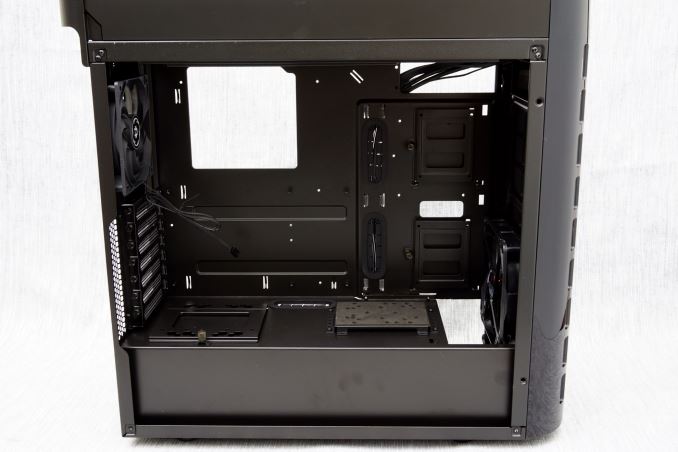
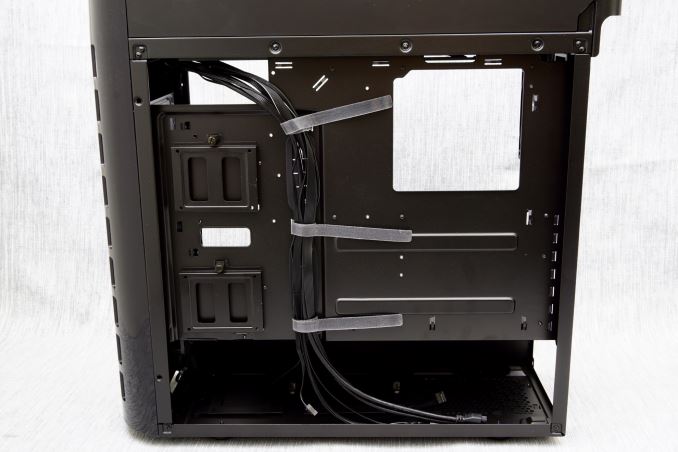
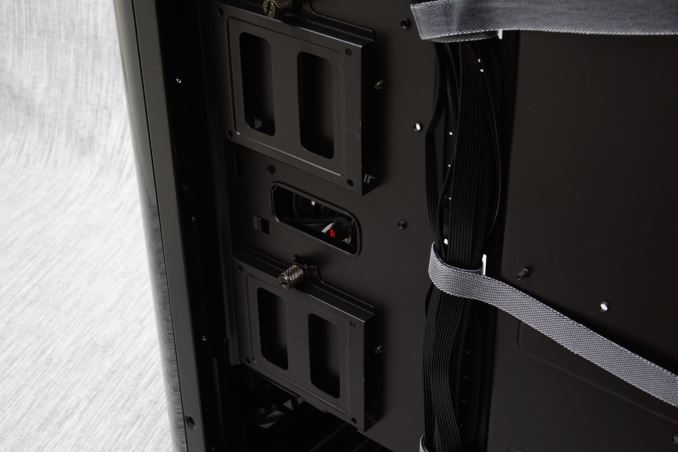
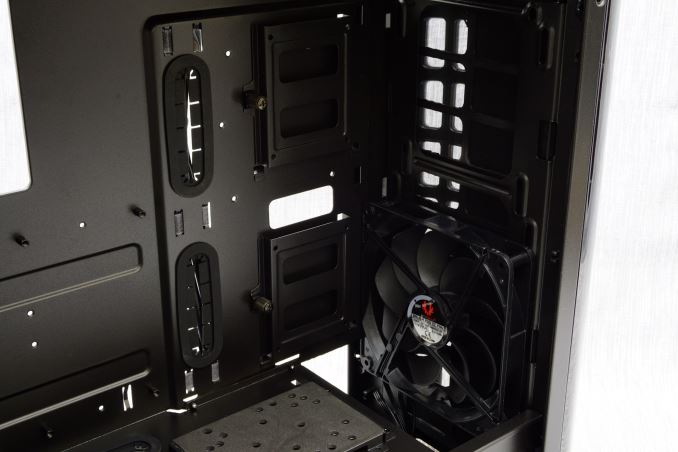
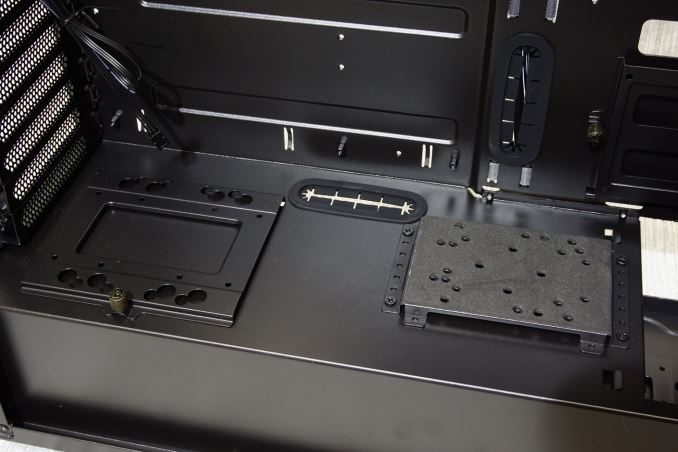
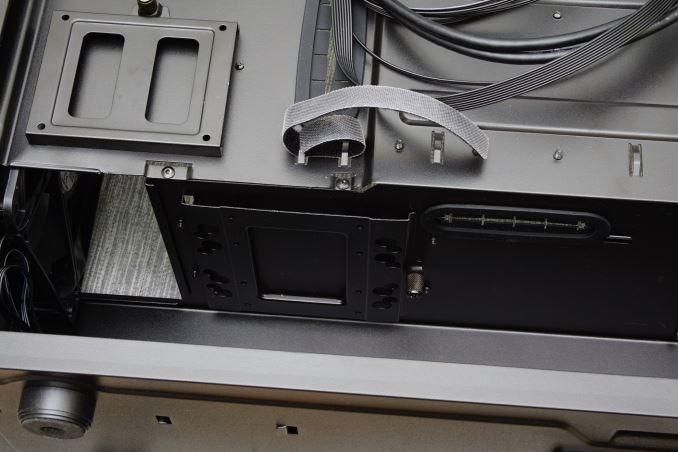
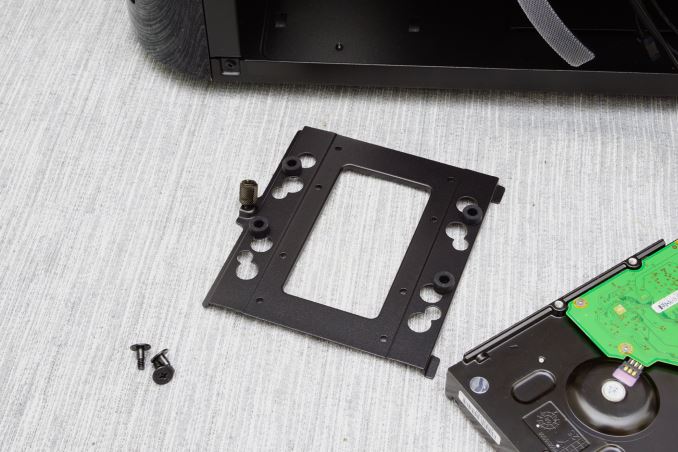
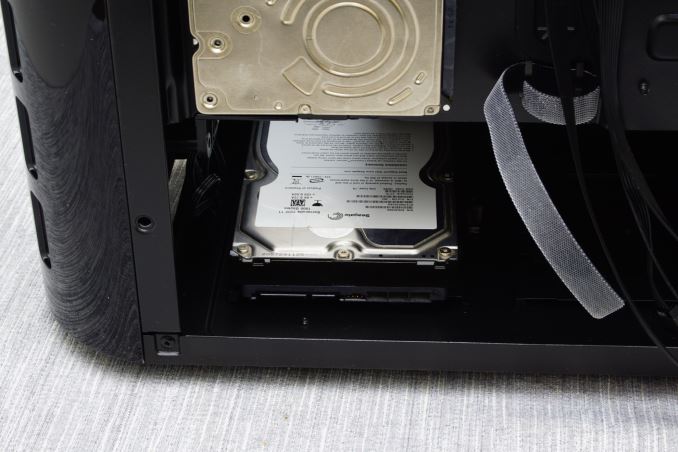
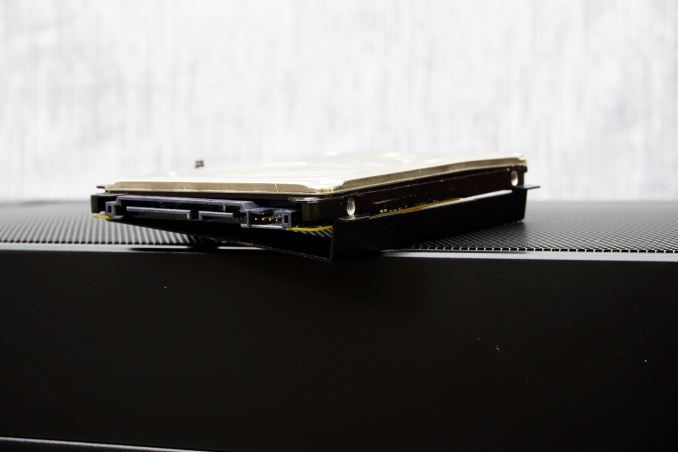
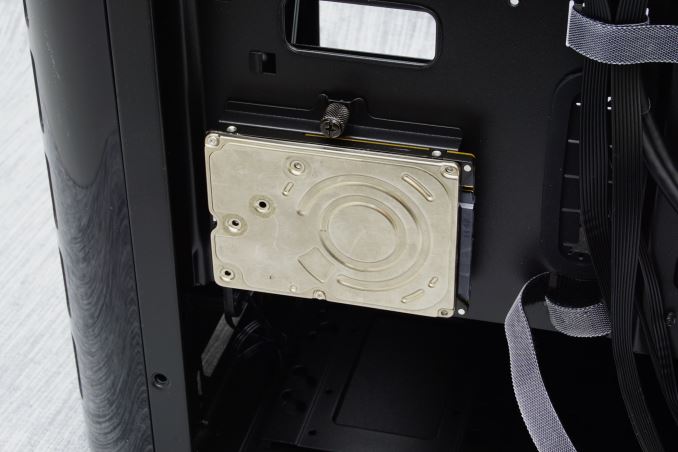
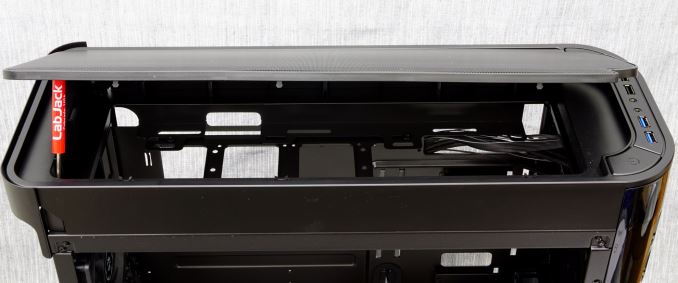
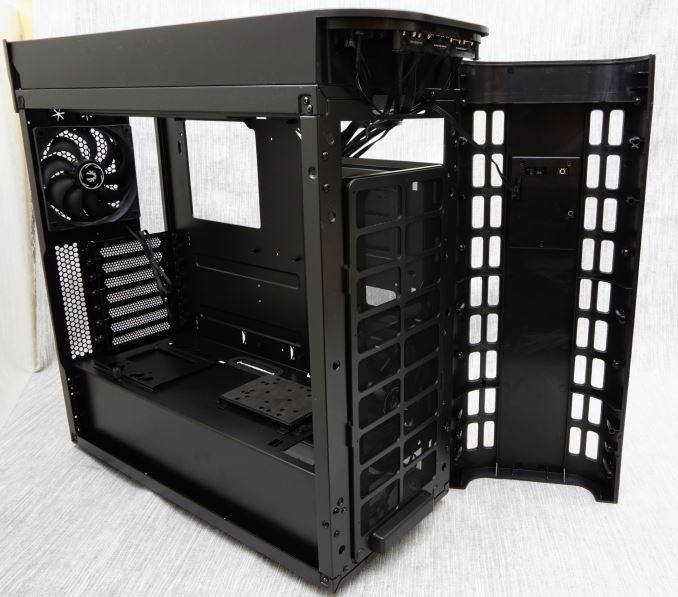

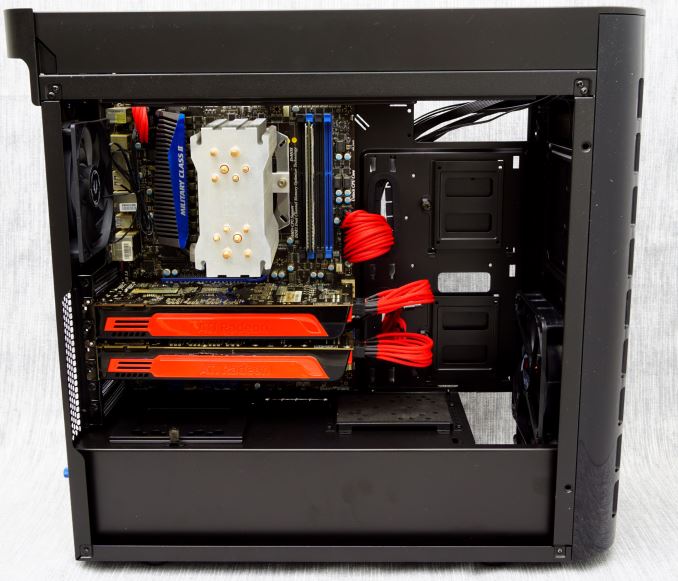
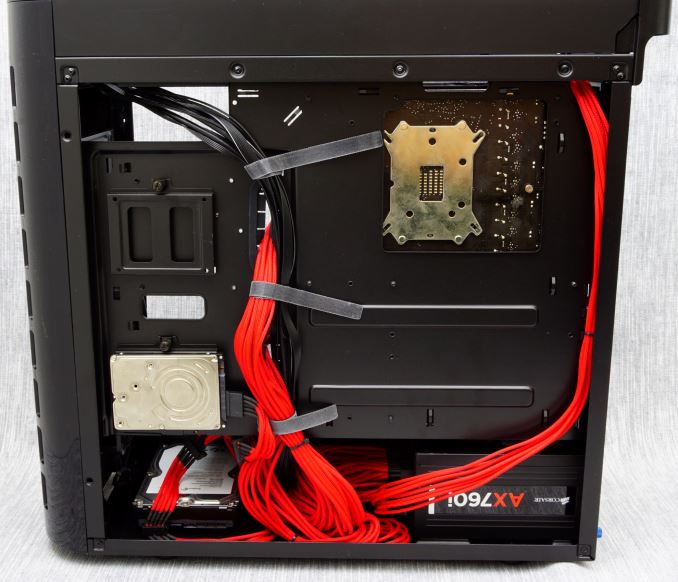








26 Comments
View All Comments
fanofanand - Thursday, August 11, 2016 - link
I understand that everything is designed to a price point, but how much more expensive could it have possibly been to go with all USB 3.0 instead of the 2 USB 2.0 ports? With backwards compatibility this makes no sense to me. USB 3.0 debuted at the end of 2009, we are talking almost 7 years here, I simply cannot understand this decision.woggs - Thursday, August 11, 2016 - link
All motherboards still have USB2.0 sockets and very few have more than one USB3.0 for the front panel. I was happy to see they put both because both is useful for the vast majority of folks. And, I wonder if they would sell you a USB3 replacement for those if you happen to have 2 USB3 sockets on your MB.fanofanand - Thursday, August 11, 2016 - link
I understand that all motherboards have 2.0 sockets but that is again, borne out of cost. With backwards compatibility there is literally zero reason for this. I understand why some legacy ports remain, like PS/2 (many cannot access the bios with a USB keyboard) but with USB it makes no sense. You say "I was happy to see they put both because both is (sic) useful" but there is literally no benefit to USB 2.0 over USB 3.0. I am unaware of a single device that works on USB 2.0 but not 3.0.DanNeely - Thursday, August 11, 2016 - link
I'd be happy if case makers would just offer double header cables with a USB3 and USB2 header on the end. If you've only got one 3.0 header on your mobo it's not that hard to remember which pair of ports are faster; and it gives full support if you've got two 3.x headers. For a forward looking setup today at least one C port would be nice; maybe 2 because actually filling up all 4 front ports isn't that common and it'd give better future proofing.Wider support from the mobo vendors is needed too. I was able to get 2x headers for my Haswell build; but that requirement severely limited my available mobo vendors (I ended up with an MSI board). (I also went with a Case Labs case that used a painted to match 3.5" bay device for its front panel support so that I can easily switch to a setup with C ports in the future; but realize that their cases are far to expensive for the average enthusiast.)
slyronit - Friday, September 2, 2016 - link
On my desktop PC, WIndows device recovery tool cannot flash my Lumia 950XL if it is connected to a USB 3.0 port (either on the front panel or the rear motherboard port). This has happened across Windows 8, 8.1 and now Windows 10, chipset/USB drivers always updated (Tried both the drivers from Windows Update and the Asus drivers). But for such cases, I can make do with a rear USB port.slyronit - Friday, September 2, 2016 - link
And this is all the more surprising, because the phone itself supports USB 3.0 and when connected to my SP3 dock USB 3.0 port, there's a noticeable speed improvement, compared to USB 2.0.RaichuPls - Thursday, August 11, 2016 - link
Some wireless mice/headsets don't play well with USB3.0, such as the Logitech G930 and G602. In my case, interference from USB3.0 ports severely reduce the wireless range of both.eek2121 - Thursday, August 11, 2016 - link
I have 2 devices that don't work with USB 3.0. A headset as well as a high end microphone. The need for USB 2.0 still exists. Manufacturers are aware of this and that's why they haven't dropped USB 2.0. Believe me, if manufacturers could drop USB 2 they would. Going all USB 3.0 would actually LOWER costs.fanofanand - Thursday, August 11, 2016 - link
Thank you eek and Raichu, I was unaware of those issues. I do stand corrected. :) How's this, I wish motherboard makers would at least provide an option with no legacy ports. For those completing a new build, the less legacy the better.kaidenshi - Sunday, August 14, 2016 - link
USB 3.0 isn't 100% backwards compatible across all devices, though. There are some USB 2.0 devices out there that don't enumerate properly or tend to lose communication when plugged into a USB 3.0 socket. Usually the product's support site will have a KB entry about this, and they will suggest using a 2.0 port. I've personally had this issue with a couple of different USB flash drives and with an Android cellphone.In short, USB 2.0 on a case in 2016 is a positive, not a negative thing.